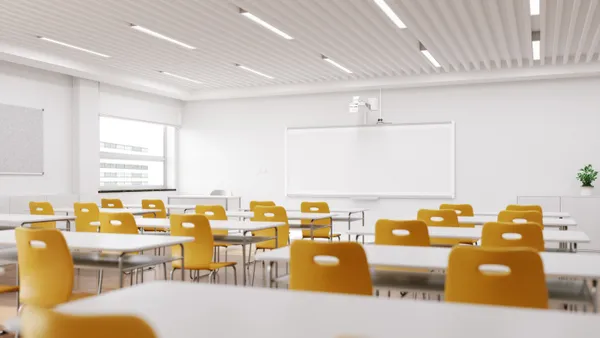Dive Brief:
- The job market is shifting so that most traditional “trade” paths require a greater understanding of STEM courses and communication, requiring administrators and teachers to find more ways to incorporate this knowledge into career and technical education (CTE) tracts, District Administration reports.
- Traditional CTE pathways often now require post-secondary education, but the need for four-year degrees is diminishing as only about 23% of occupations require it — which means higher education institutions may need to spend more resources in promoting the idea of going to college.
- Students need to be exposed to a variety of career pathways in elementary and middle school so that they can begin thinking not only about their career goals but also about the courses they will need to get there, an approach that results in higher graduation rates.
Dive Insight:
In the past, elementary and middle school education generally was designed to provide a good, solid educational foundation, while high school was a time to direct energies toward either a college or a career track of study. While that generally still holds true, career exploration needs to begin even earlier today. The job market is shifting and the types of jobs available in the future will require different resources that demand different educational foundations — which means that higher education institutions as businesses will have to spend more time and resources trying to prove their value in the marketplace not only to potential customers, but also state policymakers that are providing funding.
These new jobs require a different breed of workers. Factory workers of the past needed only to be good at faithfully completing repetitive tasks. However, the increase in automation and robotics means that today’s factory workers often need technical skills as well. In many cases, students cannot seek the advice of experienced professionals in the community to learn about job requirements, because that job description has changed. That is why internships are now more important than ever. For higher education institutions to stay in the game, campus leaders can consider expanding K-12 partnerships that offer these types of valuable internships.
High school students need to get a vision of the future it they are to remain in school. Having a career goal as early as possible will help them see the point of what they are studying. Students will not only be able to better target their courses to suit their career pathways, but they will also be able to better understand why courses like English are important as a way to increase the communication skills they will need to achieve success in their future work environment. As schools strengthen efforts to help students focus on their own personal future success, graduation rates and academic performance should improve as well.














